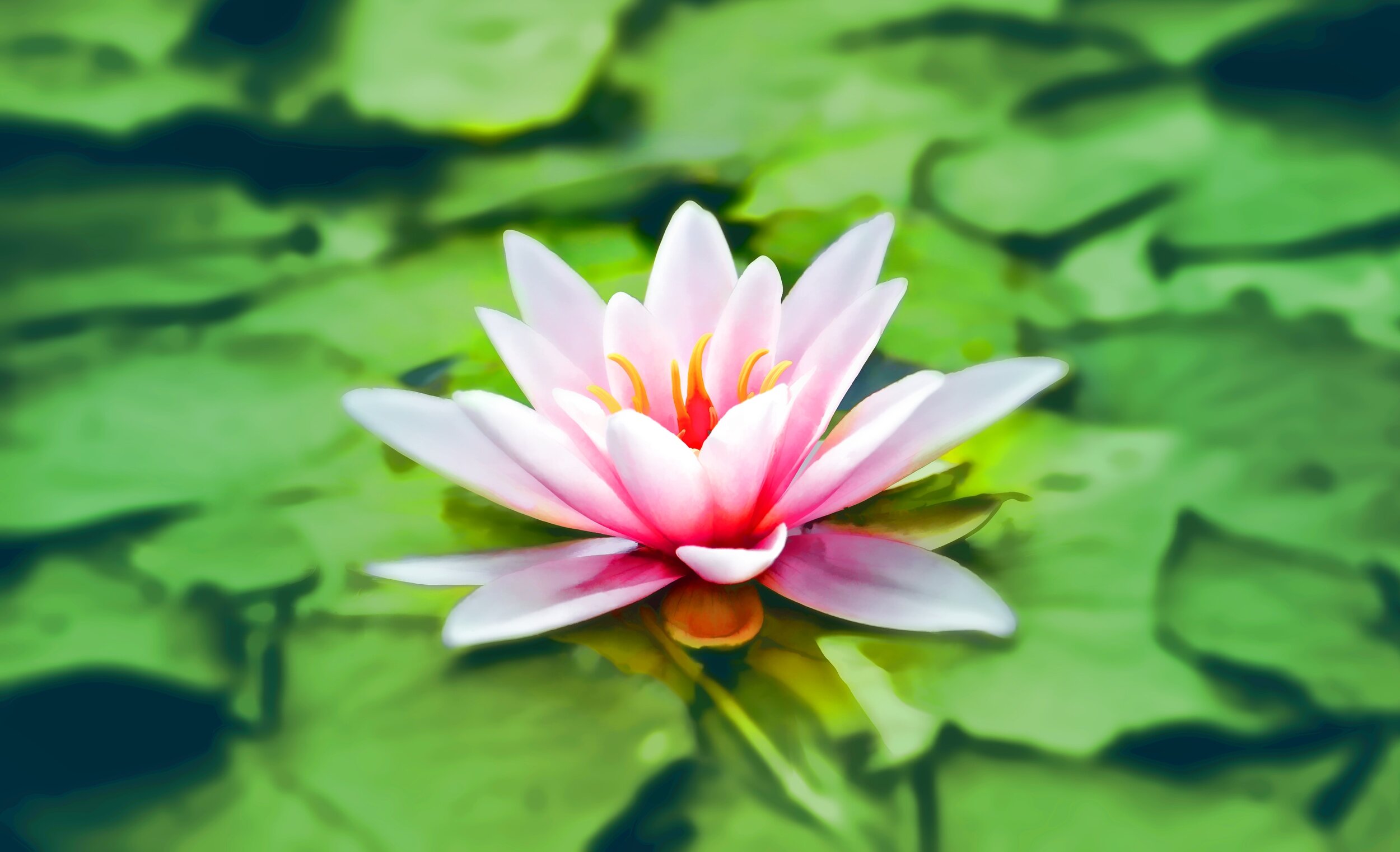How to Meditate, Why, and the Benefits
/There are many scientifically-backed benefits of meditation from reducing stress to improving your mood. Here’s how to meditate so you can start reaping the rewards.
We’re definitely living in uncertain times.
And there can be a lot of stress when there’s uncertainty.
When we’re stressed, we’re not always our best selves.
Meditation has been shown to reduce stress and anxiety, and increase your balance and happiness.
Who wants some of that?
Why Does Meditation Matter?
With 60-80,000 thoughts per day, it’s easy to get lost and lose focus on what’s happening right in front of you.
We can get tangled up in the stories in our heads, which are often untrue but run automatically on repeat.
These untamed thoughts can prevent us from living happily in the present moment.
How Does Meditation Work?
Meditation is a tool or technique to help quiet the fluctuations of the mind. It helps you move from distraction to the present moment.
You’re not trying to stop your thoughts. That’s simply is not possible. Trust me, I’ve tried.
Instead, you’re learning to become more of an observer of your thoughts, a witness.
Notice the difference between, I’m completely stressed out.
And
I’m experiencing some stress in my body.
The first statement is all-consuming. You think you are stress. It’s in your body and you think it’s who you are.
The second is more of a bird’s eye view of what you’re witnessing happening. This perspective doesn’t tend to feel as painful in the body. You’re more objective so you can respond differently.
Which would you rather feel?
Meditation Benefits
The list of meditation benefits is long. There’s so much science-backed research now on how your overall health, mood, and productivity can improve after starting a meditation practice.
Your meditation benefits could include:
Lowering cortisol, your stress hormone
Increasing serotonin for a mood boost
One of the most impressive studies highlighting the benefits of meditation was led by the University of Massachusetts Medical.
They took a group of people who hadn’t meditated before and had them meditate for 30-minutes every day for 8 weeks. They took an MRI before and after the study to measure the participants’ brain and wiring.
At the end of the 56 days, the new meditators’ physical brain structure had changed.
Their prefrontal cortex, responsible for focus, memory, decision-making, and compassion had increased.
And there was a decrease in the amygdala, which holds stress, anxiety, fear, and anger.
Meditation caused a physical change in the structure of the participant’s brains. Truly impressive.
How to Meditate
Are you now sold on starting, or continuing, a meditation practice? I hope so.
Let’s get into it and talk about the specifics of how to meditate.
Start by sitting comfortably. You can sit in a chair, on a cushion, or lay down, but you don’t want to fall asleep. Sleeping is different than meditation.
Get as comfortable as you can so you put your attention on your meditation and not your body.
Once you’re comfortably situated, it’s a few simple steps from there to meditate.
1. Rest your attention on a single point.
You begin meditating by resting your attention on a single point of focus.
Some people like to use an object, sound, or mantra, but one of my favorites is the breath.
The breath is always with you so you can practice at any time.
You simply observe the breath coming in and out of your nose.
2. Your attention will drift.
While you’re watching your breath, your thoughts may turn to a sound in the room.
You may have an itch.
You may start grocery shopping in your head.
You may think, dang, meditation is hard.
This is all normal and ok.
As soon as you notice that you’re thinking, simply return your attention to your breath, watching the inhale and exhale.
3. Float.
At some point, your attention on your breath will drop, purposely or not.
You may then experience a millisecond of nothingness.
You might drift into total peace between thoughts.
You might not.
Either way, it’s ok.
You’re still meditating.
4. There are those thoughts again.
After you float, a thought might, no will, come back in like, oh look, I’m floating.
Not a problem.
Return to the breath.
5. Repeat
Meditation is a dance, drifting back and forth between thoughts and your single point of attention.
Remind yourself that your thoughts aren’t inherently “bad.” You just want to learn to avoid engaging with all of your thoughts or making up a story on what it means that you’ve drifted from your breath.
Witness without judgment or commentary, and return to your breath.
Be as gentle with yourself as you can when you notice that you’ve started thinking again, and simply, lovingly, bring your attention back to your inhale and exhale.
Keep repeating.
Am I Meditating Right?
You’re learning so many things when you meditate, even when it doesn’t feel like it.
What you’re doing is developing the muscle that brings you back to your breath. This muscle grows every time you have a thought and return your attention to your inhale and exhale.
Every time you catch yourself thinking about your next meal while you’re meditating, you simply say, oh there’s a thought, I’m going to go back to my breath, and hooray I’m building my meditation muscle.
This is the muscle that’s going to help you with better reactions when you encounter a difficult situation.
You’ll be less likely to engage in knee-jerk comments or behavior that you might regret later.
You’ll have a greater ability to respond, instead of reacting without thinking.
So you may not feel anything special while you’re meditating. You likely won’t.
There are no fireworks or places to get.
The real benefits of meditation happen afterward. They happen after you’ve toned your muscle to calmly return to your single point of attention without commentary on your distractions.
After you’ve toned this meditation muscle, you might notice that you’re more relaxed.
You could be more present and calm when interacting with your kids and friends.
You may no longer be triggered by people that may have previously pushed your buttons.
You could be happier and sleep better after you’ve created a meditation practice.
The meditation benefits can be subtle but they can also be really powerful, and life-changing.
Applying Meditation
If you’re interested in going deeper on your meditation practice to learn more ways to incorporate it into your life to improve your health, you can work with me one-on-one.
As a Certified Transformational Health Coach and Meditation Teacher, I’m uniquely positioned to help you apply meditation to areas of your life you may need additional help like emotional eating, weight gain, sleep loss, or hormone balance.
When you can become a better witness to your breath and learn to manage your thoughts, your diet, mood, and stress levels can all change, for the better!
If you’re interested, reach out for more information so you can begin using meditation to achieve more relaxation and better health in your life.























